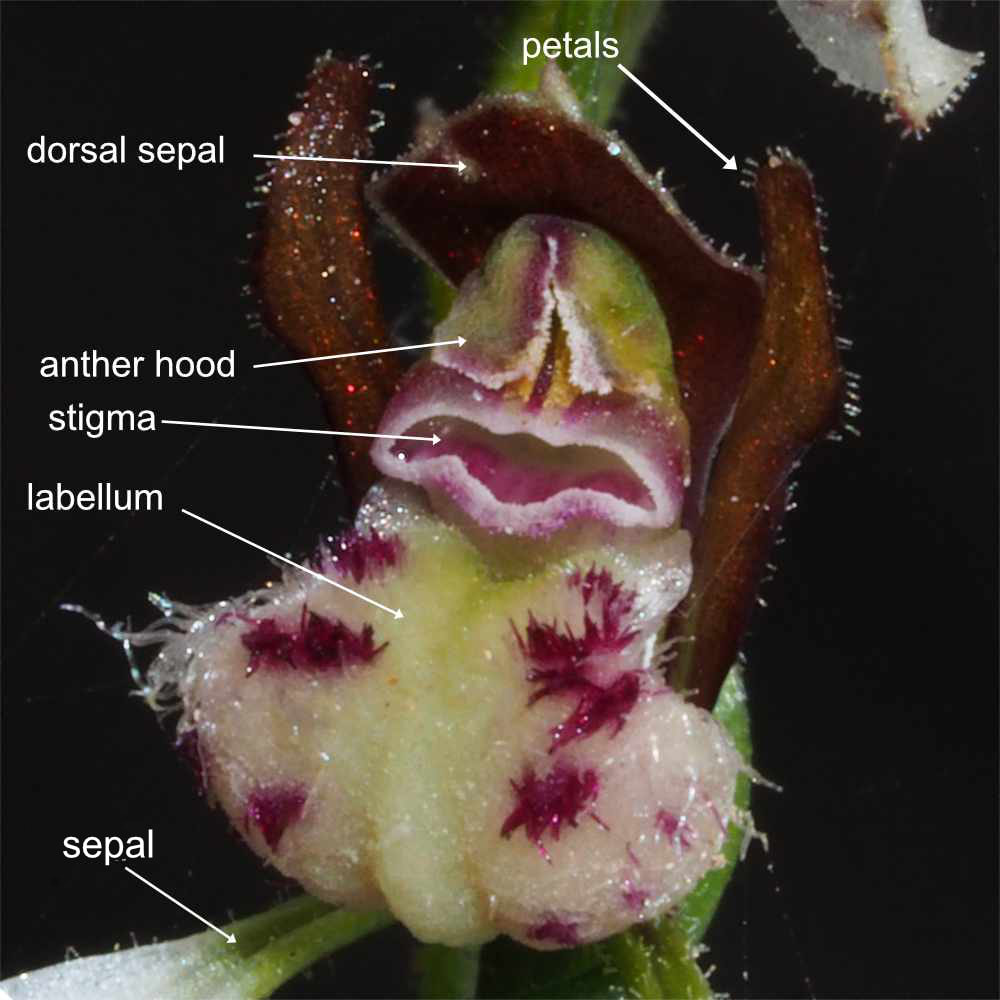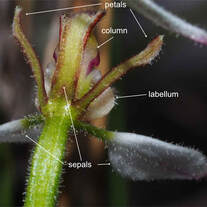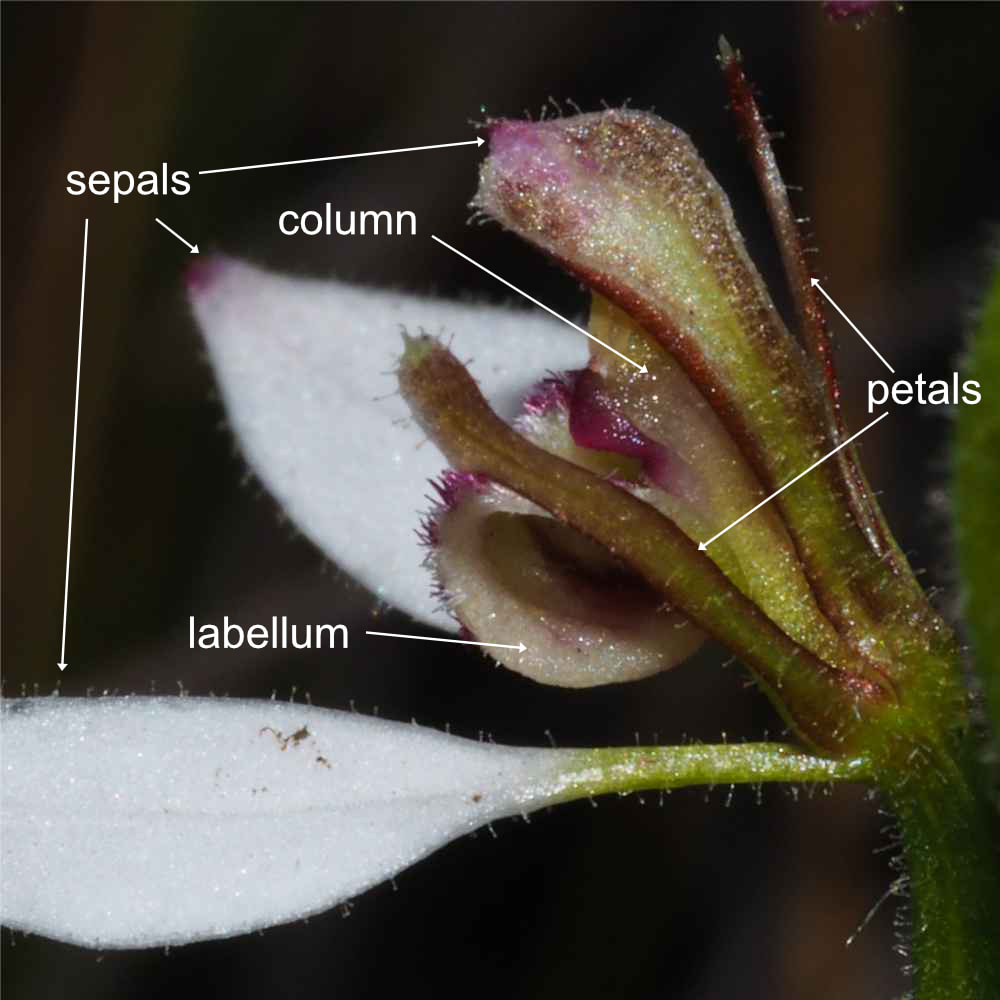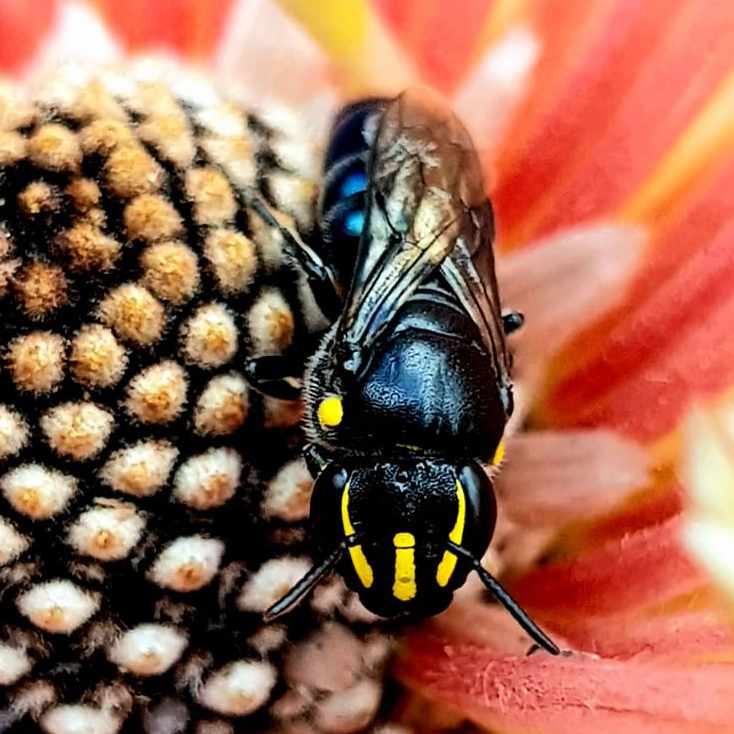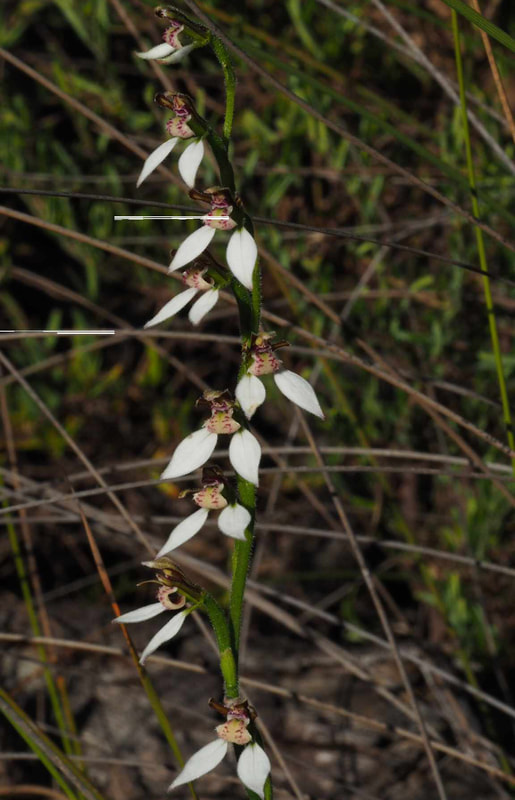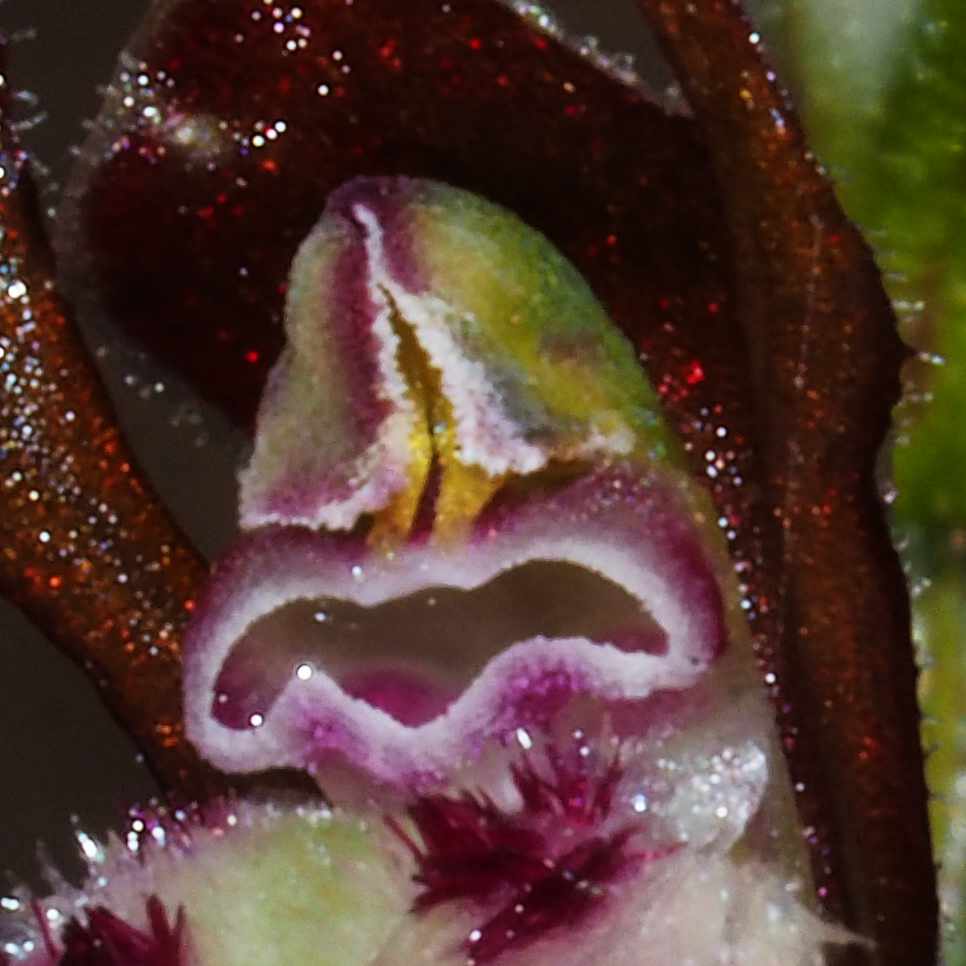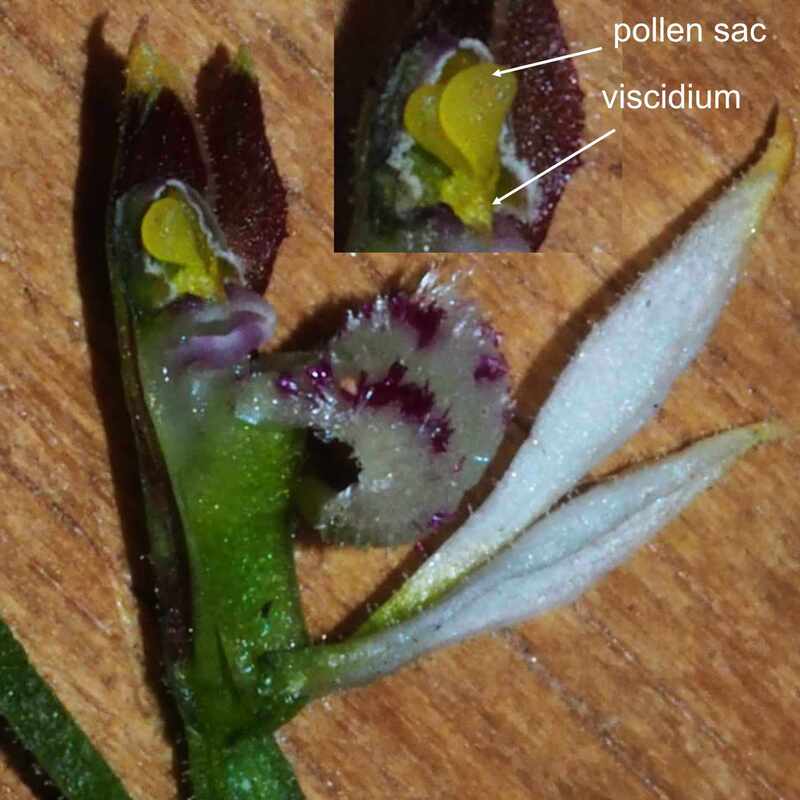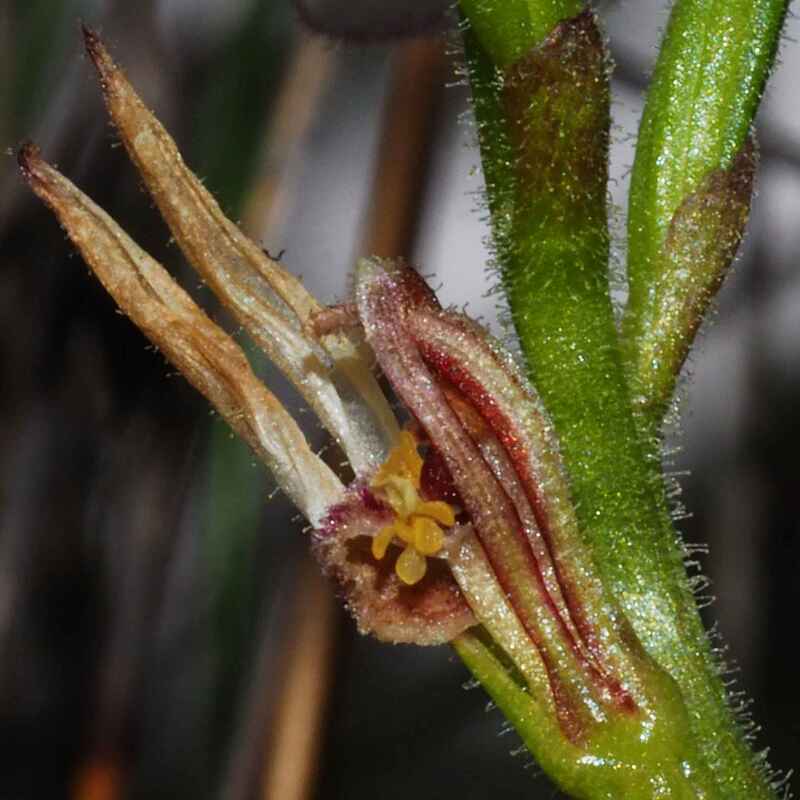Bunny orchids Eriochilus species are endemic to Australia, with six of the eight species occurring in the south-west of Western Australia. In Foxes Lair the common bunny orchid Eriochilus multiflorus subsp. multiflorus and crinkle-leaf bunny orchid Eriochilus multiflorus subsp. undulatus are flowering now. The common bunny orchid has more flowers per head, prefers gravel soils, and and begins flowering about a week earlier than crinkle-leaf. Flowers have a delightful structure.
| Caladenia genus (of spider orchid fame) is the closest relative, but there are marked differences.
|
